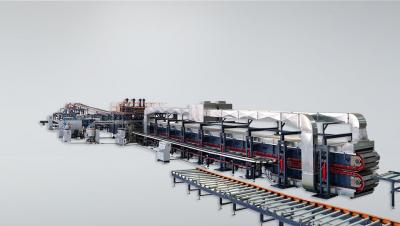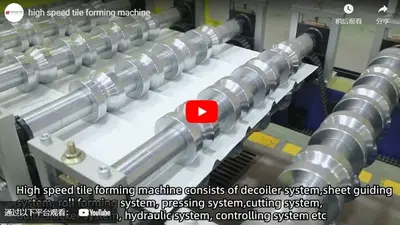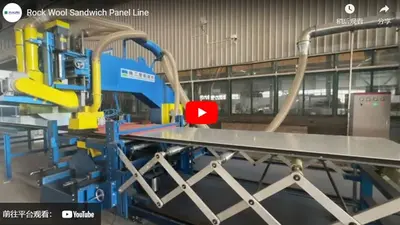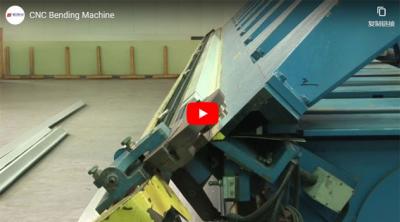What are Sandwich Panel Advantages and Disadvantages?
What is the sandwich panel?
A sandwich panel is a type of construction panel that consists of three layers - a core material sandwiched between two outer layers, or "skins", typically made of metal, plastic, or composite materials. The core material is usually made of lightweight materials such as foam, honeycomb, or balsa wood.
The sandwich panel's unique design provides several advantages over traditional construction materials. It is lightweight, yet strong, making it ideal for use in applications where weight is a critical factor. Additionally, the panel's insulating properties can help improve energy efficiency and reduce heating and cooling costs.
Sandwich panels produced by polyurethane sandwich panel production line are commonly used in the construction of walls, roofs, floors, and partitions in buildings, as well as in the manufacturing of vehicles, aircraft, and boats. They are also used in the creation of portable structures such as temporary offices, shelters, and exhibition stands.
Sandwich panel uses
Sandwich panels have a wide range of uses across various industries due to their unique properties. Some common uses of sandwich panels include:
Construction: Sandwich panels are commonly used in the construction of walls, roofs, floors, and partitions in buildings. They provide excellent insulation, and structural strength, and can be easily assembled and disassembled.
Transport: Sandwich panels are used in the manufacturing of vehicles, aircraft, and boats due to their lightweight and strong properties. They can be used to create parts such as doors, floors, and walls, which contribute to the overall weight reduction of the vehicle.
Cold storage: Sandwich panels are also used in cold storage rooms and warehouses due to their insulation properties. The panels can help maintain a constant temperature and prevent heat loss, resulting in energy efficiency and cost savings.
Cleanrooms: Sandwich panels are used in the construction of cleanrooms in industries such as pharmaceuticals, food processing, and electronics. They provide a clean and hygienic environment and can be easily cleaned and sterilized.
Portable structures: Sandwich panels are used to create portable structures such as temporary offices, shelters, and exhibition stands. They can be easily transported and assembled, making them ideal for use in outdoor events and construction sites.
Advantages of sandwich panels
Sandwich panels are composite structures made up of three layers - a lightweight core material sandwiched between two thin skins. These panels have many advantages, including:
Lightweight: Sandwich panels are lightweight, which makes them easy to handle, transport, and install. They can be used to construct buildings, walls, roofs, and floors, and they reduce the overall weight of the structure, which can save on material costs.
High strength: Despite their lightweight nature, sandwich panels are incredibly strong and have excellent load-bearing properties. They are resistant to bending, compression, and torsion, which makes them suitable for use in high-stress applications.
Thermal insulation: Sandwich panels have a high thermal insulation value, which makes them ideal for use in cold rooms, freezers, and other temperature-controlled environments. They can also be used to reduce energy costs by maintaining a stable indoor temperature.
Fire resistance: Sandwich panels are often made of fire-resistant materials, which makes them suitable for use in buildings that require high levels of fire safety. They have low flammability and are designed to slow down the spread of fire.
Acoustic insulation: Sandwich panels are effective at reducing noise and can be used to create soundproof rooms or buildings. They absorb sound waves, preventing them from bouncing around and creating echoes.
Durability: Sandwich panels are durable and can withstand harsh weather conditions, such as wind, rain, and hail. They are also resistant to corrosion and do not require much maintenance.
Aesthetically pleasing: Sandwich panels come in a wide range of colours and finishes, which makes them ideal for use in buildings that require an attractive appearance. They can be customized to match the surrounding environment and can be used to create a unique and modern look.
Overall, sandwich panels provided by the sandwich panel production line including PU sandwich panel line are an excellent building material that offers numerous advantages over traditional construction methods. They are cost-effective, energy-efficient, and versatile, making them suitable for a wide range of applications.
Disadvantages of sandwich panels
Sandwich panels have some disadvantages, including:
Cost: Sandwich panels can be more expensive than other building materials, especially when customized sizes and finishes are required.
Limited sizes: Sandwich panels are typically manufactured in standard sizes and thicknesses, which can limit design flexibility and require additional cutting and fitting for unique applications.
Durability: Sandwich panels are prone to damage if they are not properly installed or if they are exposed to extreme weather conditions, such as high winds or heavy rain.
Fire resistance: Some sandwich panels are not fire-resistant, which can pose a risk in buildings where fire safety is a concern.
Moisture resistance: Sandwich panels are susceptible to moisture intrusion if not properly sealed, which can cause damage and affect the insulation properties of the panel.
Recycling: Sandwich panels are difficult to recycle due to their composite nature, which can make disposal and end-of-life management a challenge.
It is important to consider these disadvantages when choosing building materials and to work with a knowledgeable sandwich panel machine supplier and installer to ensure the proper selection and installation of sandwich panels.


 CN
CN
 EN
EN
 fr
fr  de
de  es
es  it
it  ru
ru  pt
pt  ar
ar  th
th  pl
pl  ro
ro 







 Call us on:
Call us on:  Email Us:
Email Us:  #1809, Jianhu Rd, Keqiao, Shaoxing, Zhejiang, China
#1809, Jianhu Rd, Keqiao, Shaoxing, Zhejiang, China 